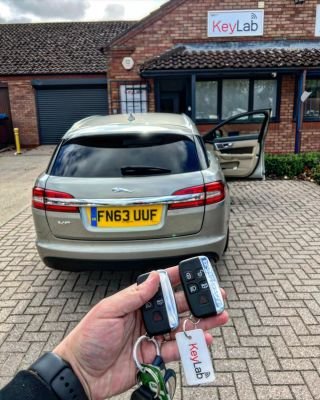What You Need to Know About Car Diagnostic Tests
On Board Diagnostics (OBD) Systems are used in many cars. These interfaces can be used to check the condition of any vehicle. A scanner is required to conduct a car diagnostic test. It plugs into the connector on the driver’s side dashboard. The scanner will take a code from the car’s system and will provide a mechanic with an idea of the issue.
Problem areas
The modern automobile is highly computerized and features a variety of sensors throughout the engine. The diagnostic tool generates an error code for every component of the vehicle that is experiencing an issue. These codes indicate the specific system that requires to be repaired or fixed. The diagnostic tool can quickly identify the problem areas.
Codes that indicate areas of concern
Trouble codes are a method for auto mechanics to troubleshoot problems in vehicles and to help determine where they are. Certain trouble codes are serious and need immediate attention. Certain codes indicate more serious issues that could put at risk the driver and passengers. Certain codes are connected to specific systems, for instance, the engine emissions system, while others are not.
DTCs are generated from the On-Board Diagnostics I systems. These systems monitor the major components and transmit problem codes. Knowing these codes is essential to reduce the time spent on vehicle breakdowns. The manufacturer of your car has an inventory of DTCs to aid in identifying problems and to determine the type of vehicle.
Diagnostic trouble codes are five-character strings that inform mechanics of where the issue is. They are used to identify and resolve vehicle problems either electrical or mechanical. Some codes are temporary , while others are permanent. Certain codes will only appear when you complete certain actions. While some codes not affect your car, some will require immediate intervention from a mechanic.
The most common method for reading codes is to use an OBD-II scanner. These scanners plug into the diagnostic port in the vehicle and provide the necessary information. Some even come with software that interprets codes. Code readers are less expensive but don’t provide the same features as scanners.
Diagnostic tools
Car diagnostic tools can assist identify the cause of car problems. While warning lights may be a precursor to serious problems, a tool can detect the problem before it has an impact on the vehicle’s performance. These tools can also dig deep into the car’s system and provide more thorough analytics. They are available at all auto repair shops.
One of the most basic tools is a code reader. It reads the car’s computer and displays any codes it discovers. It can also clear codes in order to determine whether the repair was successful. You can also make your own list with parameter IDs using these tools.
Another type of car diagnostic tool is the scope. It lets you test a wide range of components and parts. The scope can also read signals from sensors and other parts of the vehicle. While professional automotive diagnostic tools can be costly but they make it easier for technicians and auto mechanics to identify a car quickly.
Code readers are yet another essential diagnostic tool. They connect to an OBD-II port on a car. They are great to diagnose check engine light problems. These tools will provide possible error codes, which can help narrow down the possible causes. Most cars made from 1997 and on have these ports, although high-end vehicles and some imported models require a separate code reader.
Diagnostic tests can be expensive.
The cost of car diagnostic tests depends on several aspects. These factors include the type of diagnostic test performed and the make and model of the vehicle, as well as the potential issues that the car might be facing. Certain tests are more expensive than others, [Redirect-Meta-0] and you must take into consideration your budget before selecting a specific mechanic. A basic diagnostic test for your vehicle costs less than $60, while more complicated tests can cost hundreds.
A mobile car diagnostics near me diagnostic test will assist you in identifying the problem areas in your vehicle and the work required to fix them. If you can address the issue earlier, you can avoid costly repairs down the road. If your vehicle exhibits any of these signs, you should get a diagnostic test done.
While you may be hesitant to invest money in diagnostic tests, it can save you a lot of money and stress. It is worth having your car checked in order to avoid costly repairs such as brake or rim repair. A diagnostic test can help you identify the root of the problem and provide solutions.
Diagnostic tests are a quick and easy way to determine the cause of a problem within your car. The procedure can be done by an auto mechanic or part store for a small cost. The cost can range from $55 to $150, based on the problem and the mechanic.
Tests for diagnostics require specific requirements.
A car diagnostic test is an engineering job that is performed during the manufacturing process of a vehicle. There are a myriad of factors that affect the requirements of a car diagnostic test. A car’s cooling system may not be able to regulate the temperature accurately, so the test you are taking may not work. Furthermore, the requirements for a diagnostic test for cars can be affected by the location on the assembly line.
Fortunately, technology has made the process of diagnosing a mobile car diagnostic near me‘s issue easier. Today, software-based diagnostics can check virtually every component in the vehicle. They can detect issues with the engine, brakes and exhaust system, and more. These tests also detect malfunctions in the vehicle’s throttle and fuel injector.
Before the advent of computers and diagnostic tools, it took an extensive process to find car issues. This was expensive and time-consuming. Today, diagnostic tools are more precise and speedier. These tools are able to search for information and notifications from manufacturers in the car’s computer , and provide an expert a complete overview of the car’s background.
A car diagnostic test is extremely beneficial, and should be conducted on a regular basis. It can help ensure that your vehicle functions well and can save you many dollars in the long run. It can help you spot small issues and save you money on costly repairs. It can also identify safety issues and stop you from being stuck on the road in an emergency. This is why the car diagnostic test is an essential investment.
A diagnostic test
A diagnostic test is crucial in the event that your car is experiencing issues. It will allow a mechanic to identify the issue and determine what needs to be addressed in the next step. Diagnostic tests usually last for about an hour. However they may be extended if the mechanic requires more time to identify the problem.
Getting a diagnostic test can aid in avoiding costly repairs by catching problems before they become costly. A diagnostic test will inform you how long the issue has been affecting your car and how often it’s occurring. It will also allow you to determine whether your car needs to be taken to an repair shop.
A diagnostic test for your car can save you money and extend the life of your vehicle. A technician will check various parts of your car including the engine, exhaust system and transmission. The results of the test will aid a repair shop in determining the root of the issue, and also determine if it’s an issue that is simple or a more serious one.
A diagnostic test involves connecting your vehicle’s computer with an apparatus and analyzing problems that are causing the issue. It takes less than hours to complete and allows mechanics pinpoint the problem. Computer diagnostics can reveal issues with the engine and transmission, brakes, exhaust system and the exhaust system. The technician will then be able to determine what needs to be fixed, and what it will cost.



